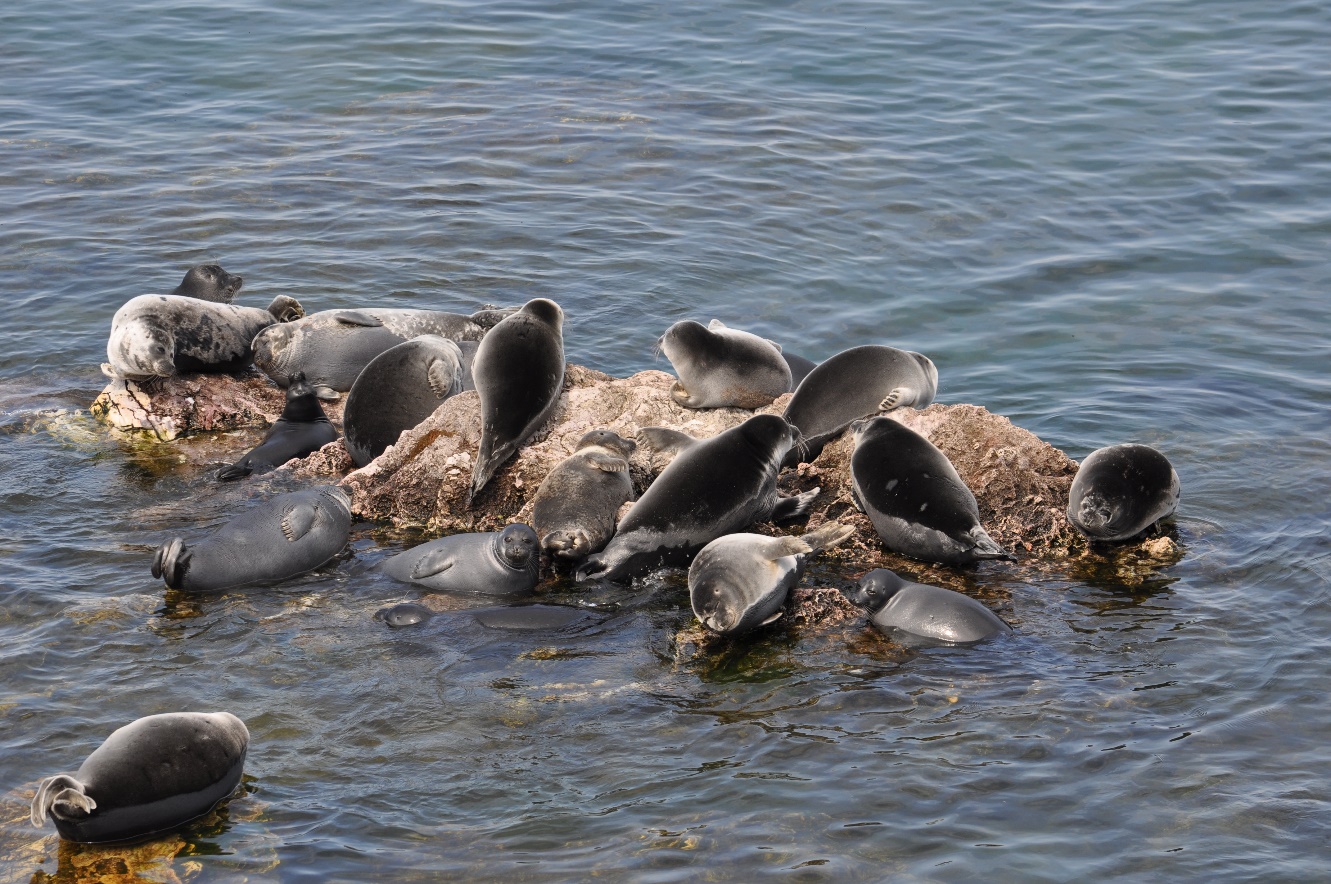
On November 29, 2019, a round table was held at the A.N. Severtsov Institute of Ecology and Evolution of the Russian Academy of Sciences, at which the main results of the study of the Baikal seal in 2019 were summed up, as well as the relevant directions for the study and conservation of endemic for 2020 were identified.
In the framework of the meeting, specialists of A. N. Severtsov Institute of Russian Academy of Sciences, spoke about the results of an expedition organized in the summer of 2019 together with the Lake Baikal Foundation, the Baikal branch of the All-Russian Scientific Research Institute of Fisheries and Oceanography, as well as the FSBI Zapovednoe Podlemorye within the project “Baikal seal Year".
The experts had the following tasks: catching seals in the Ushkany Islands, completely eliminating the probability of death of individuals, carrying out the necessary measurements and sampling for genetic, hormonal, toxicological analyzes, as well as satellite-tagging seals. An equally important purpose of the trip is to assess the total number of seals on the rookeries.
Dmitry Glazov, zoologist, marine mammals specialist, leading engineer of the laboratory of sensory systems of vertebrates of the IPEE RAS, expedition participant and researcher (R&D) spoke about the details of field work and the successful marking of 15 individuals with satellite beacons and the scientists having taken samples from 21 animals. Stock counting was carried out from the shore, from a boat, as well as using an unmanned aerial vehicle.
V.I. Chernook, a researcher at the St. Petersburg branch of the All-Russian Research Institute of Fisheries and Oceanography (VNIRO), shared the results of aerial surveys of the Baikal seal, which were carried out in 2019 in the northern part of Lake Baikal. These works made it possible to determine the optimal characteristics of aerial survey equipment, as well as the optimal heights and patterns for observing seal dens. A proposal was put forward to expand the territory of areal survey accounting next year to the entire area of ice on lake Baikal, as the key habitats of the Baikal seal can change throughout the year.
A.I. Boltnev, Doctor of Biological Sciences, Head of Laboratory of Marine Mammals, VNIRO, emphasized the need to monitor annual measurements of birth rates and assess the endemic population, study annual changes in the structure of animal nutrition, generational survival rates, and develop recommendations for maintaining ecosystem sustainability and managing biological resources. According to the expert, this program can help develop measures to maintain the well-being of the mammal population in conditions of intensive fishing.
Project Manager of the Lake Baikal Foundation Ekaterina Petrunina spoke about the origins of the project and its social block. A new round of research on the Baikal seal began with the Foundation initiating a scientific program to study endemic in the summer of 2018. In November 2018, at the international conference in Arkhangelsk, the main directions of the program for the study and conservation of Baikal endemic were presented, which formed the basis of scientific work. Thanks to the support of private donations to the Foundation, the charity foundation "The World Around You" and the Presidential Grants Fund, a seal was tagged, which was described by the specialists from the A. N. Severtsov institute. In October of this year, the Foundation also launched an environmental online lesson on the Baikal seals on the Stepik platform, which was watched by more than 30 thousand students across Russia. Ekaterina Petrunina emphasized that it is important to form the right habits in relation to the environment in the citizens, to increase the reach of people who are aware of the threats to the life and health of the endemic. Environmental education for adults through children using online tools is an effective practice.
According to the results of the round table, experts came to the conclusion that it is too early to draw global conclusions about the state of the population of the Baikal seal. In addition, the question of the exact size of the Baikal seal population remains open at the moment. Scientists have yet to more accurately determine its abundance, animal health and the influence of external factors on the endemic.
All experts emphasized the importance of continuing the project. A proposal was made to invite representatives of government and business to cooperation. A proposal was also voiced to create an accessible theoretical base with the results of all current developments and studies for establishing scientific communication and cooperation in order to protect the Baikal seal.
